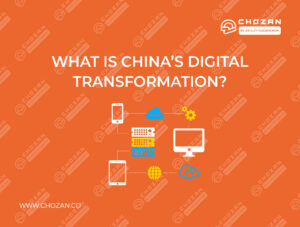In China, omnichannel sales, also known as New Retail, are predicted to reach 1.8 trillion yuan by 2023. As new retail models emerge, the ratio of physical online retail to total retail sales of consumer goods has risen from 20.7% in 2019 to 27.1% in 2022.
In most top-tier Chinese cities, internet buying and quick delivery are considered commonplace. It’s also common for Chinese individuals to purchase through social applications or to be a part of a virtual social group on an e-commerce platform.
China has firmly established itself as the world leader in the e-commerce business when it comes to the number of online shoppers and the scale of mobile payments. Technology will expand online channels with the growth of artificial intelligence, 5G, and cloud computing.
So how did it get to be like this? Customer-centricity plays a big role. Customer-centric approaches have helped new tech companies ramp up large user bases, increase sales, increase user stickiness, expand their ecosystems and shape their brand image.
Let’s look at some instructive examples.
1 Pinduoduo uses strategic incentives to build its base
Monthly active users on group buying site Pinduoduo increased from 733 million in 2021 to 882 million in 2022. The company’s goal was to attain exponential user growth and it did it with a clever strategy to attract new users by using a sharing reward mechanism so users could get a better price by sharing with others.
Pinduoduo users share a link to WeChat. If WeChat pals click on the link, both parties will receive a small monetary prize. Since tiny amounts of money can’t be withdrawn (only amounts above one hundred yuan can be deposited to a bank account), users were motivated to continue sharing to more friends in order to push the reward amount over 100 yuan. Because of this sharing feature, the user base exploded.
It astutely honed it on the kinds of benefits its customers wanted most and systems limits (amounts under 100 yuan can’t be withdrawn) and used them to gain a following, motivate people to join the app and get them to refer friends, building a large user base quickly. Since it first did this, other companies have followed in its footsteps.

Users share Pinduoduo’s links on WeChat to get rewards.
Screenshots via WeChat.
2 Xiaomi’s C-suite professionals live stream directly to customers
Lei Jun, the CEO of Xiaomi, is also an internet celebrity with tens of millions of fans. He appeared in a livestream to promote the company’s products. It attracted a lot of fans. His first livestream was very impressive. In half an hour it hit a popularity peak. More than 12.99 million people watched it and sales reached 200 million RMB as 587,000 units were purchased. The sale also worked as a promotion with Xiaomi’s brand being exposed to new customers and expanded its brand awareness.
Consumers feel listened to and seen and important when a company’s top management talk to them directly and they also feel a kinship when they see them hard at work online selling their products.

Lei Jun’s Douyin livestream
Screenshot from Douyin.
3 Douyin’s algorithms improve user stickiness
In 2022, the number of Douyin users in China surpassed 800 million and, more importantly, Douyin’s user stickiness (DAU/MAU) had reached more than 60%, significantly above that of other platforms. This is mostly credited to Douyin’s AI technology. Douyin records a user’s behavior while viewing a video, such as clicking, playing, staying, following, commenting, liking, forwarding, and so on, and calculates these features in real-time to recommend new content to them. Even briefly watching a video means that interest areas are being recorded and the more people watch, the more fascinated they are. People lose track of time. “I just watched for a short time but somehow, an hour has passed’ is the general consensus among Douyin users.
For example, if a user logs into Douyin and watches a dance-related video, the user will be labeled as a dance lover and Douyin will recommend more dance videos, and videos liked by others who have the same interests and viewing behavior as them. This detailed recording of consumer interests and, directing the app to cater to them, causes consumers to spend more time on the app.
Clearly, these detailed AI algorithms have boosted its user stickiness.
4 Alibaba’s mini programs and shared memberships expand its ecosystem
Nowadays, when we think about Alibaba, various apps come to mind such as Taobao, Alipay, Fliggy, Maoyan Movie, and so on. These are all part of the Alibaba ecosystem, China’s largest internet ecosystem, which includes movies, travel, food, and many other areas. With such a vast, maze-like environment do consumers become disoriented? No. But why is that?
Because Alibaba has successfully integrated all of these applications into mini programs and combined them into a single app (Alipay), consumers can experience them all in one place without having to download anything or click into other platforms or apps. This caters to people’s desires for ease and convenience and provides a smooth user experience.
For example, Maoyan Movie, an app for purchasing movie tickets, can be used immediately in Alipay’s app and the user can pay using Alipay. This saves the user from having to download the app, register, login, and go through a complex process before paying.
Furthermore, Alibaba developed a common membership system to connect ecosystem participants. When a user purchases a VIP membership for one Alibaba app, he or she can also access membership benefits for other apps in the ecosystem. Because of this customer-centric integration and upgrading, more customers and merchants want to join the ecosystem, spurring growth.

Alibaba mini-progame and shared membership
Screenshot from Alipay
5 RED uses offline activities to build its young brand image
RED, a rapidly developing Chinese social media network, has a distinct corporate identity as young and energetic. RED’s social content and users shape this image. RED has created a one-of-a-kind community with huge volumes of user-generated content (UGC). Its users are largely young women from first and second tier cities and, as of 2022, RED had over 200 million monthly active users. 72% of whom were born in the 90s. RED follows a customer-centric philosophy and has tight engagement with consumers.
In contrast to other platforms, RED prioritizes offline events. Every summer, for example, it holds a community immersion experience, allowing users to meet in an open diverse community and get an intuitive feel for the RED community. This also expands opportunities for bloggers to collaborate and communicate which in turn promotes UGC content development.
There are currently over 160,000 posts on RED relating to its community festival campaign, with keywords like “young”, “energetic”, and “fun” reflecting the platform’s brand image.
China’s economy and technology are evolving quickly, and key tech companies are moving at China speed. Businesses that want to stay ahead of the game are wise to keep an eye on this market and learn from some of their examples that can help them to grow their business. We can assist you with insights, analysys and a strategy to get your firm up to speed. Contact ChoZan to see how you can implement your own winning customer-centric philosophies.
Sources:
https://www.chinabaogao.com/detail/614052.html
https://www2.deloitte.com/content/dam/Deloitte/cn/Documents/consumer-business/deloitte-cn-cb-consumer-insight-zh-230118.pdf
https://www.chinabaogao.com/detail/606375.html
https://www.jiemian.com/article/4834898.html
https://www.cbndata.com/report/2891/detail?isReading=report&page=21
https://www.zhihu.com/question/289075553
https://company.stcn.com/gsxw/202203/t20220321_4263774.html
Read more related posts
-
Top 10 Digital Marketing Resources that Small Business Owners Must Follow
The internet is overflowing with digital marketing resources. Some blogs are popular and highly recommended while others have been overlooked. Are the following 10 digital marketing resources on your subscription…
-
Top 10 Digital Marketing Resources that Small Business Owners Must Follow
The internet is overflowing with digital marketing resources. Some blogs are popular and highly recommended while others have been overlooked. Are the following 10 digital marketing resources on your subscription…
-
Live Streaming in China: The Top 5 Platforms
Live streaming in China is becoming the most popular video format with more than 325 million online viewers in total, or 45.8% of Chinese netizens, according to The Chinese Live…
-
2022 Live Streaming in China: The Top 5 Platforms
With more than 727 million online viewers (68.1% of Chinese internet users), live streaming is the most widely used video format in China among Chinese netizens. According to Forbes, livestream…
-
Top Online B2B Chinese Channels (Websites & Social Media) You Need To Know For 2023
The Chinese economy is booming, and its rising middle-class means increased demands across all sectors. B2B connections stemmed from China’s digital transformation. Jack Ma, the founder of Alibaba.com, became one…








